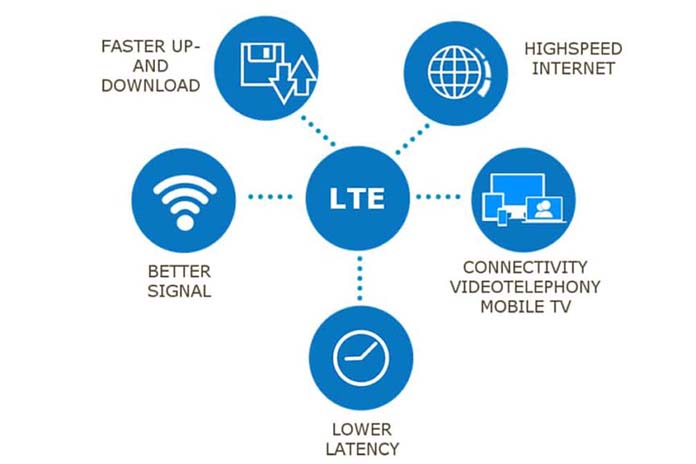The acronym LTE is often used with reference to the English expression Long Term Evolution , which is used in the field of telecommunications . LTE is a standard for wireless high-speed data transmission that represents the evolution of 3G , but without reaching the speed of 4G .
The system was developed by the 3rd Generation Partnership Project ( 3GPP ), a group of telecommunications associations. Thanks to its characteristics, the various antenna technologies can be implemented more simply.
The LTE standard allows users to use the Internet Protocol ( IP ) for data traffic. Thus it provides support services such as navigation through the Web , online gaming, voice over IP ( VoIP ) and streaming video, for example.
Let’s see below some of the characteristics of LTE, several of which could be considered advantages over other communication standards:
- Its bandwidth is “adaptive”, that is, it has the capacity to adapt in a range from 1.4 to 20 MHz, through 3, 5, 10 and 15;
- The possibility of working in a large number of different frequency bands;
- Compatibility with different technologies of the 3GPP group ;
- The high number of users per cell. Each one is 5 MHz and can contain more than two hundred users;
- High spectrum efficiency. Supports multi-antenna application, in addition to orthogonal frequency division multiplexing (OFDM) downlink and DFTS-OFDM upstream;
- Its latency is really low, with values like 10 milliseconds for the user plane and 100 for the control plane . The user plane is also known as the “information plane”, among other names, and is the one that transmits user traffic on the network. The control plane, on the other hand, carries signaling traffic;
- Through the use of open interfaces, LTE is able to separate both the user and control planes;
- Its protocol architecture is simple;
- It can work in conjunction with different systems, such as CDMA2000 , a family of 3G standards that use a multiple access scheme to perform their different functions;
- Has OFDM single frequency network;
- Its maximum download speed is 326.5 megabits per second in the case of 4 × 4 antennas and 172.8 megabits per second for 2 × 2 antennas;
- Its maximum upload speed is 86.5 megabits per second;
- LTE* its operation is perfect in motion if the speed does not exceed 15 km / h, although it can withstand up to 500 km / h;
- The ideal cell length is 5 kilometers, but it can also measure between 100 and 500 kilometers, with modest degradations every 30 kilometers.
Despite all this, its use worldwide found certain limitations due to the limited availability of spectrum and terminals and the difficulties for operators to generate profitability.
The LTE filter , on the other hand, is known as the filter that should be used in digital terrestrial television ( DTT ) reception facilities to avoid interference from this mobile phone standard on UHF antennas .
The name LTE Advanced , on the other hand, responds to a preliminary standard that was intended to improve the LTE. It was registered at the end of 2009 and was intended to exceed the requirements of the International Telecommunications Union , in addition to being compatible with the LTE devices on the market. Among the advantages pursued are the advanced network topology and the combination of low-consumption nodes with other relay networks.
LTE International Airways , finally, is the name of an airline of Spain that operated between 1987 and 2008 . When it stopped working, it had a fleet of five Airbus A320-200 aircraft .
Also Read: What Is Robotics – Definition, History, Types And More

